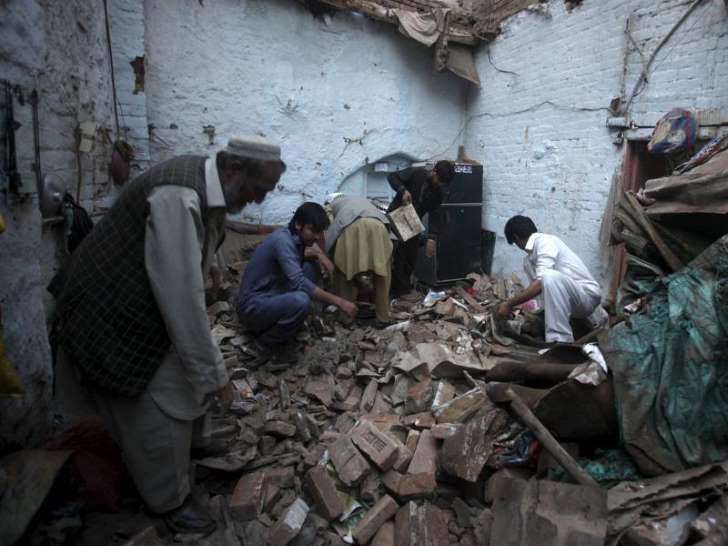October 27, 2015
NEW DELHI – Monday’s earthquake in Afghanistan was likely triggered by the same colliding of tectonic plates that caused Nepal’s devastating temblor earlier this year – an indication the Himalayan region is seismically very active now, a top Indian seismologist has said.

October 27, 2015
NEW DELHI – Monday’s earthquake in Afghanistan was likely triggered by the same colliding of tectonic plates that caused Nepal’s devastating temblor earlier this year – an indication the Himalayan region is seismically very active now, a top Indian seismologist has said.

“This means that governments in the region should closely monitor the Himalayan region for seismicity in a sustained manner and without fail,” CP Rajendran of the Bengaluru-based Jawaharlal Nehru Centre for Advanced Scientific Research told Hindustan Times.
Monday’s 7.5- magnitude quake was an “outlier” with its epicentre far beyond India, it was apparently triggered by the Indian plate’s continuous “subduction” into the Eurasian Himalayan plate.
In geology, subduction denotes a tectonic plate colliding with, and then moving under another plate.
“Monday’s earthquake looks like a far outlier in the Afghanistan-Turkmenistan belt, far beyond the Indian plate, but it actually appears to have been triggered by the leading edge of the Indian plate pushing below the Himalayan plate,” Rajendran said.
The Himalayas, perched precariously on the edges of two colliding continental plates – Indian and Eurasian – is priming for a catastrophic earthquake, said Rajendran, who led an Indo-Australian study on the subject.
The Indian plate started drifting towards the Eurasian one millions of years ago when a colossal chunk of land from what is now Australia broke off and fused with Asia to form the Indian subcontinent.
New research, partly funded by the Indian government to forecast earthquakes, has grim news to share – a great quake never seen in centuries could strike Uttarakhand and an area home to 10 million people.
That’s because a 700-year-old “fault” beneath the state has reached a tipping point, a large team of Indian and Australian experts, including Rejendran, concluded after gruelling laboratory and on-site investigations. The investigations included the scouring of the riverbeds of the Bhagirathi, Alaknanda and Kali.
After two powerful earthquakes with a magnitude of more than 7 struck Nepal in April and May, several seismologists around the world predicted the Himalayan region would experience more such temblors.
Scientists had said the quakes in Nepal had not released all the pent-up seismic pressure in the region and that it could take scores of 7-magnitude temblors to accommodate all the motion between the Indian and Eurasian tectonic plates, the Live Science journal reported.
“The earthquakes in this region can be much, much larger,” Walter Szeliga, a geophysicist at Central Washington University, was quoted as saying by Live Science.
“We have the potential for bigger earthquakes than we might have otherwise expected,” Gavin Hayes of the US Geological Survey told Science journal.
Rich Briggs, a USGS research geologist told Wired magazine after the May 12 temblor in Nepal: “The readjustment in (geological) stress could play out in days, weeks, months or decades – we just don’t know, there remains a potential for large earthquakes in the region.”
Why Hindu Kush?
According to the USGS, the India subcontinent moves northward at the latitude of Monday’s earthquake and collides with Eurasia at a velocity of about 37 mm a year. Geological displacements are continuing, caused by the activity of the Indian plate as it grinds into the Eurasian plate.
Quakes that rattled north India this year
Data sourced from the India Meteorological Department’s earthquake reports shows several quakes occurred this year in the Hindu Kush region of Afghanistan, where Monday’s 7.5-magnitude temblor had its epicentre. At least 12 earthquakes with magnitudes of more than 5 hit the region until September, with tremors being felt in north India.
Courtesy: HT
















































































































